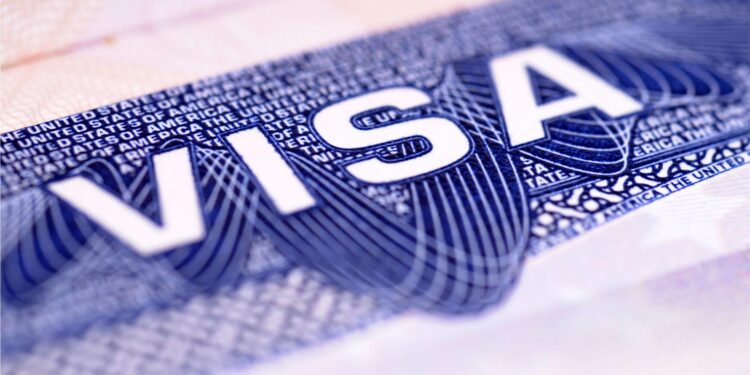Visa Issues While Traveling – Prepare in Advance

This business aviation blog post is part of a series covering visa issues while traveling.
Visa and associated documentation requirements differ enormously worldwide. As these requirements may change at a moment’s notice, business aircraft operators need to be careful not to slip up in this area. Visa issues can delay, alter, or scrub a planned international trip, so it’s important to work with your 3rd-party provider and ground handler to confirm visa requirements as early in the planning phase as possible.
The following is an overview of what you need to know:
1. Be aware that visas are required for most international travel
Visas are often required for international travel, but this depends on nationality; destination; purpose of trip; type of flight; and whether you are an active or positioning crew member or a passenger.
2. Check visa requirements in advance
It’s best to confirm visa requirements in advance with your 3rd-party provider and/or ground handler. Your ground handler will have direct contacts with appropriate authorities and will be able to check visa statuses at a moment’s notice. You may also contact an embassy directly; but, in this case, there may be differing opinions depending on where the embassy is located.
3. Know that crew member and passenger visas can differ
In some countries crew need special category visas. For example, when you travel to China, “C”-type visas are often the only acceptable option for crew members. At many international locations, crew members may not require visas on arrival, but there are usually certain conditions attached, such as being permitted in the country seven days or less. Operational flight crew and flight engineers with a seat in the flight deck may not require visas; however, flight attendants or on-board security personnel may need visas. At some locations flight attendants are permitted visa exemptions if they’re in uniform and carrying professional licenses/certificates. In cases of crew swaps – arriving on a corporate aircraft and departing commercial or vice versa – operational crew may require visas where they may otherwise not need them.
4. Be aware of other visa considerations
It’s always preferable for crew to have extended-stay or multiple-entry visas when possible just in case there’s an unintended stop, an AOG situation, or you decide to stay longer at destination. If for example you drop off or pick up passengers in Russia, make two stops in Russia, or are part of a crew swap, you’ll most likely need a visa in advance. At some locations crew may not need visas for short stays – usually up to seven days – but will require one if staying longer. In such cases it may not be possible to extend your stay without a visa, and visas cannot be processed while you’re in the country. In China, passengers on international transit stops of up to 72 hours – in the case of Shanghai and Beijing only – may not require visas if certain conditions are met, but crew, in such cases, must have visas.
5. Know options for multi-entry visas
Multi-entry visas are possible for many countries. China is strict on multiple-entry requirements, will want you to prove you are making multiple trips, and will require invitation letters for each flight. Brazil issues visas valid for up to five years and covering multiple entries. Best practice is for crew to have at least two passports on hand so that one can be sent for visa purposes while the other is available for short-notice travel.
6. Be prepared for short-notice trips
In order to be as ready as possible for last-minute trips, it’s best to have multiple passports and to always keep visas up-to-date for countries you frequently travel to. Visa service providers can often process short-notice visa requests – depending on nationality and whether the visas are for crew members or passengers – but there are additional costs involved. Always ensure you have at least six months’ remaining validity on the passport you’re using with your visa. Most countries want passports and visas to match. In some cases, however, having a valid passport and a visa in another expired passport will not be problematic, but it’s always best to check in advance.
7. Know Schengen and CARICOM visa requirements
Schengen visas cover most of the European Union – currently 26 countries. Those who require a visa to enter the Schengen area only need to get one common Schengen visa as it covers all Schengen countries. CARICOM visas, introduced in 2009, cover all 10 CARICOM member states – Antigua and Barbuda, Barbados, Dominica, Grenada, Guyana, Jamaica, St. Kitts and Nevis, St. Lucia, St. Vincent and the Grenadines, and Trinidad and Tobago. Travelers only have to have passports stamped once to cover entry to all countries within CARICOM. CARICOM visas are not needed for nationals of CARICOM member states or nationals of Canada, France, Germany, Ireland, Italy, Japan, the Netherlands, South Africa, United Kingdom, and the U.S. or their overseas territories.
Conclusion
It’s always recommended that crew have at least two valid passports on hand. If this is not possible in your case, look at options available to fast-track passport renewals, and always maintain the right balance between passport and visa validity periods.
Questions?
If you have any questions about this article, contact me at ericstanley@univ-wea.com
Stay tuned for Part 2, which covers visa requirements when traveling.




